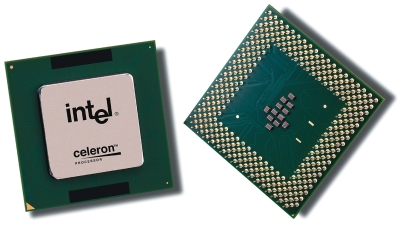Bij Tom's Hardware is een review verschenen waarin de Duron 1300 en de Celeron 1300 het mogen uitvechten. De Duron is nog op 0,18 Micron gebakken, waar de Intel evenknie reeds op 0,13 Micron is vervaardigd. Na een reeks bechmarks die variëren van audio-encoding tot games moet de Celeron het uiteindelijk toch afleggen tegen de Duron. Een weinig verassende conclusie als je kijkt naar eerdere tests van gelijkgeclockte Celerons en Durons. Het prijsverschil is inmiddels wel kleiner geworden, dus misschien dat de Celeron aan een tegenaanval bezig is.
Interessant is dat Tom's Hardware bij de Duron 1300 de multiplier niet omhoog kreeg door de L1 bruggen te verbinden. Of dat ligt aan het feit dat het hier gaat om een sample of dat dat bij alle nieuwe Durons zo is moeten we maar afwachten. Een nieuwe uitdaging? ![]()
This test clearly shows that, at the same clock speed, the more expensive Intel Celeron does not measure up to the AMD Duron. The reasons for this are quite obvious: for one thing, the Celeron's Socket 370 platform runs on an outmoded memory clock speed of 100 MHz! In this case, even the latest Tualatin core with its 256 KB L2-Cache would not be able to compete. In contrast, AMD is built on a 133 MHz memory clock that even works in DDR mode, depending on the chipset. However, both competitors are specified to work with a Front Side Bus of 100 MHz. For those that want to assemble a low-priced PC system, the AMD Duron 1300 is the better choice when compared to the Intel Celeron 1300. In reality, the price difference for typical PC systems of this performance class is approximately $85. Low-cost PCs with the Duron cost about $425, while similarly configured systems with the Celeron start at $510.
 |
Verwijderd, bedankt voor de tip

:strip_exif()/i/1023931595.jpg?f=thumbmedium)